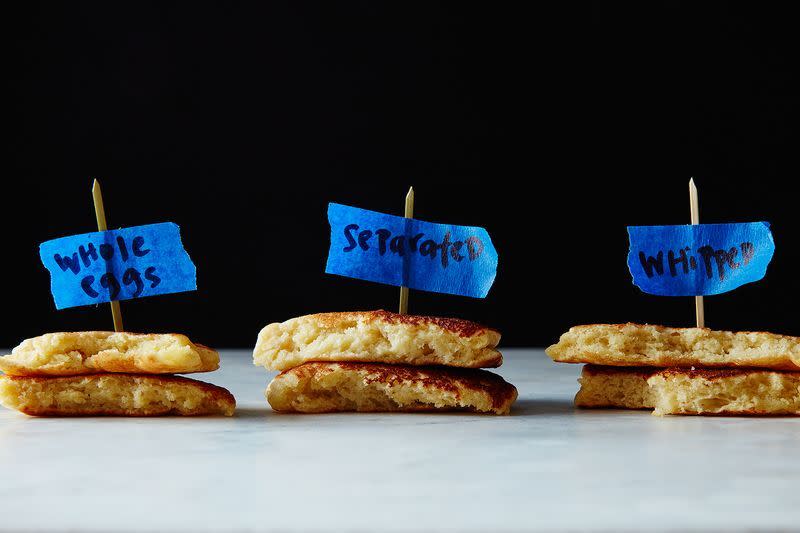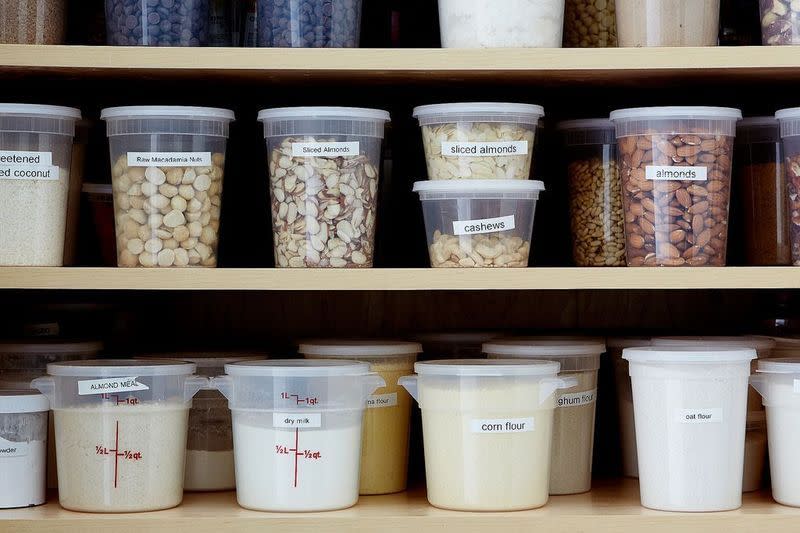The Kitchen Habit Chefs Can't Stand
As I waited for Angela Dimayuga, executive chef at Mission Chinese Food, to answer the phone, all I could think was, “Why am I calling her to ask her about tape?”
Related: 50 Recipes Better than Going out to the 50 Best Restaurants
She’s one of the best chefs in Manhattan—I could have asked her about her grandmother’s sausage-stuffed chicken or her Filipino influence on the MCF menu, why her funky, fish sauce-y mapo tofu tastes so good, or really anything else. Instead I stared at a list of interview questions that started with “Why 3M?”

Not tape’s finest moment, apparently. (Photo: James Ransom/Food52)
But as soon as she picked up the phone, it became clear that what I’d taken for a possibly mundane topic was anything but to her. As soon as I mentioned the word, “tape,” she was off, listing her preferences for width, color, cut, edges, stickiness, and quality faster than I could type. As she put it, “I could really nerd out on tape.” As can most chefs, it turns out.
Related: Even Chefs Stress About Packing Their Kids Lunch
Tape—or rather, the heated, controversial, back-of-house life of tape—came to our attention when we posted an Instagram of rows of pancakes. Above the the pancakes were torn pieces of blue painter’s tape denoting the differences between each row. And in the comments were objections: “Cut your labels properly @food52!” and “‘Super cute quirky handwriting doesn’t offset sloppy torn kitchen tape.”
Related: 5 Things I Learned From Working in a Restaurant Kitchen
A photo posted by Food52 (@food52) on Jan 28, 2016 at 4:56am PST
(Instagram: @Food52)
As home cooks and food stylists we love that you can easily tear painter’s tape, even one-handed when needed—so we needed to get to the bottom of this. When we brought the comments to the attention of our test kitchen chef, Josh Cohen, and his assistant chef that day, Chris Roberts, they dove into a rant that lasted the better part of an hour. In a kitchen, “everything grows out of the fertile soil that is tape,” Chris said.
Related: 10 Restaurant Dishes to Recreate at Home
The Tape Rule
At Piccolo in Minneapolis, where Chris once worked, cutting tape was the first thing you learned upon starting. “Tearing it was grounds for being fired,” he told me, “service would be stopped entirely if it had been discovered that the Tape Rule had not been followed.”
Related: Don’t Sniff the Cork (& 5 Other Rules for Drinking Wine at a Restaurant)
Doug Flicker, the chef and owner of Piccolo (and Chris’s boss), explained the Tape Rule to me:
“First and foremost, the tape has to get cut with a pair of scissors in a straight line, with a small tab folded over for ease of removal. On it should be written the product name, date, and initials of the person who packed the container.”
This Tape Rule was repeated almost verbatim by each chef I spoke with, with only a few moderations. Angela, for example, specified that once the tape has been cut and properly labeled, it has to be properly affixed one inch from the top of the quart container, and never at an angle.
Related: The Kitchen Tools Our Editorial Team Wouldn’t Want to Cook Without

Not following the Tape Rule in the Food52 pantry. (Photo: Mark Weinberg/Food52)
Size (and Quality) Matters
Once, while working an event, Chris recalled, an intern was sent to get more tape. “When he returned with the wrong width,” he told me, “everything stopped. Our manager had to apologize and promise an intern would never be sent for tape again.” Tape—it is universally understood by chefs—is to be no larger than 1-inch wide.
Angela, who special orders ¾-inch tape (“You don’t need more space.”), always splurges on painter’s tape. “Masking tape,” Angela told me, “leaves a sticky residue when it’s torn off. And sometimes it won’t come off at all, so people will slap another piece on top.”
A photo posted by @kitchentape on Dec 25, 2015 at 4:59pm PST
(Instagram: @kitchentape)
Everybody Has a Favorite Color (of Tape)
“Every restaurant has a color,” Angela said, “It’s definitely a thing.”
Momofuku uses orange (which is also the most expensive color because of its relative rarity).
Thomas Keller is known for his use of neon green tape (look closely and you can see it lining his kitchens). When I asked Doug what color of tape he uses, he answered, “French Laundry tape.”
Mission Chinese (and Food52!) uses blue: “We don’t cook a lot of blue food,” Angela said, “so it’s always easy to spot.”
A photo posted by Chef Thomas Keller (@chefthomaskeller) on Dec 17, 2015 at 9:25pm PST
(Instagram: @chefthomaskeller)
But Why?
At a small level, this attention to detail sounds ridiculous. “Saying it out loud, I sound so anal retentive,” Danny Amend, who has cooked at both French Laundry and Per Se, said. But put into perspective of a walk-in refrigerator during a fully-booked dinner service, it’s necessary. Josh told me, “Cooking is about mental clarity. If your mind is cluttered with the badly cut tape and the walk-in isn’t pristine, it isn’t going to work.“
Tape also functions as a means of quality control, from the bottom up. Angela said that at each prep station is a bus bin for dirty containers. “If the labels in the bins haven’t been removed,” she said, “it’s because that person is rushing or nervous—it’s something we always look for.”

(Photo: James Ransom/Food52)
As Danny put it, “An attention to tape shows you’re paying attention to the quality of the food, including how you’re presenting your finished product.”
For some, this respect is taken extremely literally. Chris refuses to eat at restaurants he knows are using cheap masking tape, but Doug said he wouldn’t go that far, then quickly added, “Though I certainly wouldn’t work in a kitchen where someone didn’t cut the tape.”
By Leslie Stephens.

